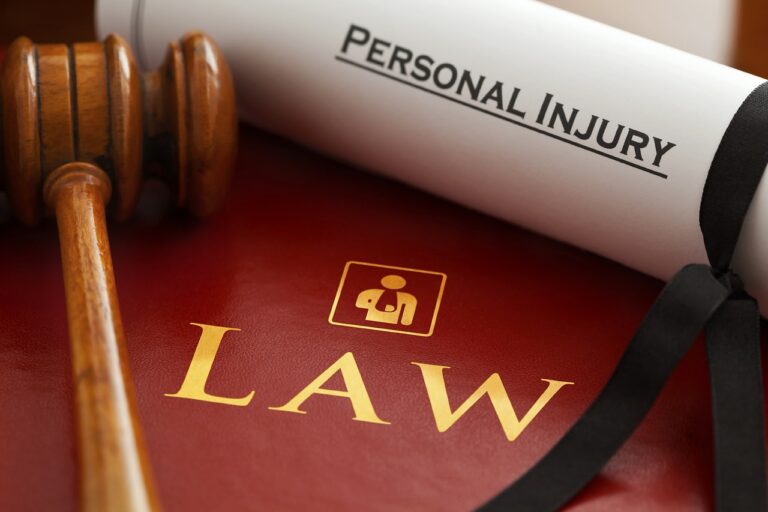Legal Insights: Understanding Liability and Compliance in Workplace Accidents
Workplace accidents are a critical concern for both employers and employees, underlining the importance of understanding liability and compliance within the professional environment. As industries continue to evolve, so do the complexities of maintaining a safe workplace, making it essential for all parties to stay informed about their legal rights and obligations. This article delves into the nuances of workplace accidents, focusing on liability, compliance, and the significant role of legal assistance in navigating these challenging situations.
The landscape of workplace safety is governed by a comprehensive framework of laws and regulations designed to protect employees while ensuring that employers maintain a safe working environment. Despite these measures, accidents can and do happen, leading to situations where understanding the nuances of liability becomes paramount. This understanding is crucial not only for addressing the immediate aftermath of an accident but also for safeguarding the future welfare of employees and the operational integrity of businesses.
Managing Liability in Workplace Accidents
Liability in workplace accidents is a multifaceted issue that requires careful consideration of several factors, including the circumstances of the accident, compliance with safety regulations, and the role of negligence, if any. Employers are generally held responsible for providing a safe working environment, but determining liability for an accident can be complex, involving detailed investigations to ascertain compliance with safety standards and regulations. Employees, on their part, need to be aware of their responsibilities, including adhering to safety protocols and reporting hazards.
The concept of negligence plays a central role in understanding liability. If an employer fails to meet their safety obligations, leading to an accident, they may be considered negligent. Conversely, if an employee’s disregard for safety protocols contributes to an accident, this could impact their compensation claims. Navigating these issues requires a thorough understanding of legal principles and the nuances of workplace safety law.
The Importance of Compliance
Compliance with workplace safety regulations is not just a legal requirement; it’s a fundamental aspect of protecting employees and preventing accidents. Regular training sessions, safety audits, and risk assessments are essential components of a comprehensive safety program. Employers must stay updated on the latest safety regulations and implement necessary measures to comply with these standards. Equally, employees must participate in safety training and adhere to established protocols, contributing to a culture of safety within the workplace.
Ensuring compliance also involves preparing for the unexpected. This means having clear policies in place for responding to accidents, including emergency procedures, accident reporting mechanisms, and support for injured employees. Such preparedness not only helps in mitigating the consequences of accidents but also demonstrates an employer’s commitment to safety and compliance.
The Role of Legal Assistance
Following a workplace accident, dealing with the legal landscape can be daunting for both employees and employers. This is where the expertise of a legal professional becomes invaluable. A Denver work injury lawyer, specializing in workplace accidents, can offer essential guidance and support. From evaluating the circumstances of an accident and determining liability to ensuring that injured employees receive the compensation they are entitled to, legal assistance is indispensable.
For employees, an experienced work injury lawyer can help in understanding their rights, handling the claims process, and advocating on their behalf. For employers, legal counsel can assist in managing the aftereffects of an accident, addressing potential liabilities, and ensuring compliance with workplace safety regulations. The right legal support can make a significant difference in resolving workplace accident issues efficiently and equitably.
Preventative Measures and Best Practices
To effectively minimize the risk of workplace accidents, employers must implement a series of preventative measures and adhere to established best practices. By taking proactive steps, not only can accidents be prevented, but the overall safety culture within an organization can be strengthened, showcasing a commitment to employee well-being and compliance with regulations. Here are key measures and practices to consider:
- Conduct Regular Safety Training: Regularly scheduled safety training sessions ensure that employees are aware of and understand the latest safety procedures and protocols.
- Maintain All Equipment: Proper maintenance of all equipment is crucial to prevent malfunctions that could lead to accidents.
- Establish a Culture of Safety: Creating an environment that encourages employees to report potential hazards without fear of retribution is essential for identifying and mitigating risks.
- Encourage Open Communication: Facilitating open lines of communication between management and staff regarding safety concerns helps in identifying and addressing issues promptly.
Adopt a Proactive Approach: Anticipating potential safety issues and addressing them before they lead to accidents is key to maintaining a safe workplace.
The Impact of Technology on Workplace Safety
Technological advancements are revolutionizing the approach to workplace safety, offering unprecedented opportunities to safeguard employee well-being and prevent accidents. Wearable safety devices are at the forefront of this revolution, enabling real-time monitoring of employee health and swiftly identifying any issues that could lead to accidents. Additionally, sophisticated software solutions are being employed to meticulously track safety incidents and spotlight potential hazards, further enhancing the ability to maintain a secure work environment.
Employers who embrace these cutting-edge technological tools are finding themselves better equipped than ever to mitigate risks, adhere to safety regulations, and foster a culture of safety. By integrating technology into their safety management practices, businesses can not only significantly improve their prevention strategies but also ensure a safer, more compliant, and secure working environment for everyone involved.
Strengthening Safety Through Collaboration and Innovation
In the evolving landscape of workplace safety, the importance of collaboration between employers, employees, and legal professionals cannot be overstated. By working together, stakeholders can identify vulnerabilities, share knowledge, and implement solutions that address the unique challenges of their environments. Innovation, powered by technology and informed by legal expertise, plays a crucial role in this collaborative effort.
This collective approach to safety ensures that the workplace is not just a space for economic activity but a sphere where well-being is prioritized and protected. As businesses continue to manage the complexities of maintaining a safe workplace, the synergy between technological advancements, legal insight, and collaborative practices will be the cornerstone of effective safety management.







2 Comments
Comments are closed.